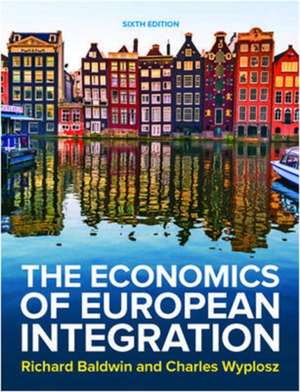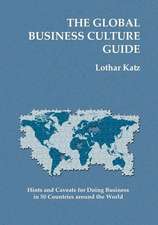The Economics of European Integration 6e
Autor Richard Baldwin, Charles Wyploszen Limba Engleză Paperback – 4 apr 2019
and controversial topic. This edition guides the students through the facts, theories, history, institutions,
laws, politics and policies of the European Union, and how each of these play their role in European economics.
Covering both the microeconomics and macroeconomics of European integration, this text is written for
second and third-year undergraduates in economics as well as advanced undergraduates and graduate
students in business, international affairs, European studies and political science.
This edition has now been updated to include two new chapters: The Economics of Covid-19 and Brexit: Problems and Prospects. These chapters can be downloaded on our Online Learning Centre and is available as part of the eBook.
Preț: 382.17 lei
Preț vechi: 398.10 lei
-4% Nou
Puncte Express: 573
Preț estimativ în valută:
73.13€ • 76.56$ • 60.51£
73.13€ • 76.56$ • 60.51£
Carte în stoc
Livrare din stoc 25 februarie
Preluare comenzi: 021 569.72.76
Specificații
ISBN-13: 9781526847218
ISBN-10: 1526847213
Dimensiuni: 190 x 247 x 20 mm
Greutate: 0.91 kg
Ediția:6
Editura: McGraw Hill Education
Colecția McGraw Hill / Europe, Middle East & Africa
Locul publicării:United Kingdom
ISBN-10: 1526847213
Dimensiuni: 190 x 247 x 20 mm
Greutate: 0.91 kg
Ediția:6
Editura: McGraw Hill Education
Colecția McGraw Hill / Europe, Middle East & Africa
Locul publicării:United Kingdom
Cuprins
Part I - History, Facts and Institutions
Chapter 1. History
Chapter 2. Facts, law, institutions and the budget
Chapter 3. Decision making
Part II - The Microeconomics of European Integration
Chapter 4. Essential microeconomic tools and tariff analysis
Chapter 5. The essential economics of preferential liberalization
Chapter 6. Market size and scale effects
Chapter 7. Growth effects and factor market integration
Chapter 8. Economic integration, labour markets and migration
Part III - EU Micro Policies
Chapter 9. The common agricultural policy
Chapter 10. Location effects, economic geography and regional policy
Chapter 11. EU competition and state aid policy
Chapter 12. EU trade policy
Part IV - The Macroeconmics of Monetary Integration
Chapter 13. Essential macroeconomic tools
Chapter 14. The history of European monetary integration
Chapter 15. Optimum currency areas
Part V - EU Monetary and Fiscal Policies
Chapter 16. The European monetary union
Chapter 17. Fiscal policy and the Stability Pact
Chapter 18. The financial markets and the euro
Chapter 19. The Eurozone in crisis
Chapter 20. The Economics of Covid-19 (Online Chapter)
Chapter 21. Brexit: Problems and Prospects (Online Chapter)
Chapter 1. History
Chapter 2. Facts, law, institutions and the budget
Chapter 3. Decision making
Part II - The Microeconomics of European Integration
Chapter 4. Essential microeconomic tools and tariff analysis
Chapter 5. The essential economics of preferential liberalization
Chapter 6. Market size and scale effects
Chapter 7. Growth effects and factor market integration
Chapter 8. Economic integration, labour markets and migration
Part III - EU Micro Policies
Chapter 9. The common agricultural policy
Chapter 10. Location effects, economic geography and regional policy
Chapter 11. EU competition and state aid policy
Chapter 12. EU trade policy
Part IV - The Macroeconmics of Monetary Integration
Chapter 13. Essential macroeconomic tools
Chapter 14. The history of European monetary integration
Chapter 15. Optimum currency areas
Part V - EU Monetary and Fiscal Policies
Chapter 16. The European monetary union
Chapter 17. Fiscal policy and the Stability Pact
Chapter 18. The financial markets and the euro
Chapter 19. The Eurozone in crisis
Chapter 20. The Economics of Covid-19 (Online Chapter)
Chapter 21. Brexit: Problems and Prospects (Online Chapter)
















